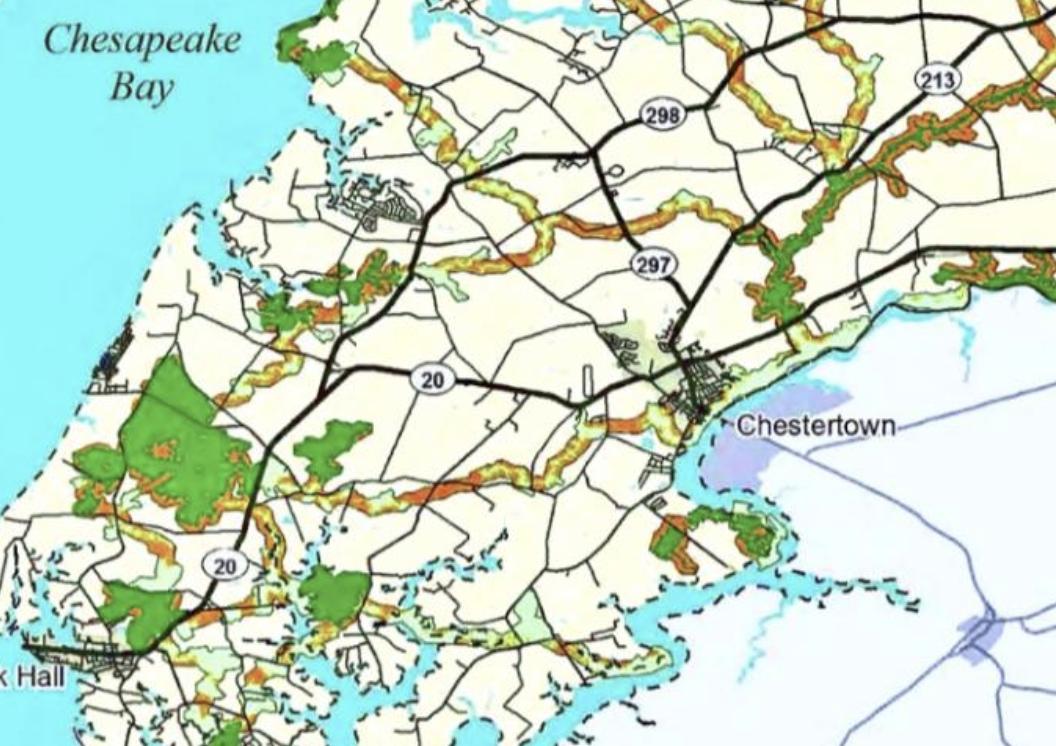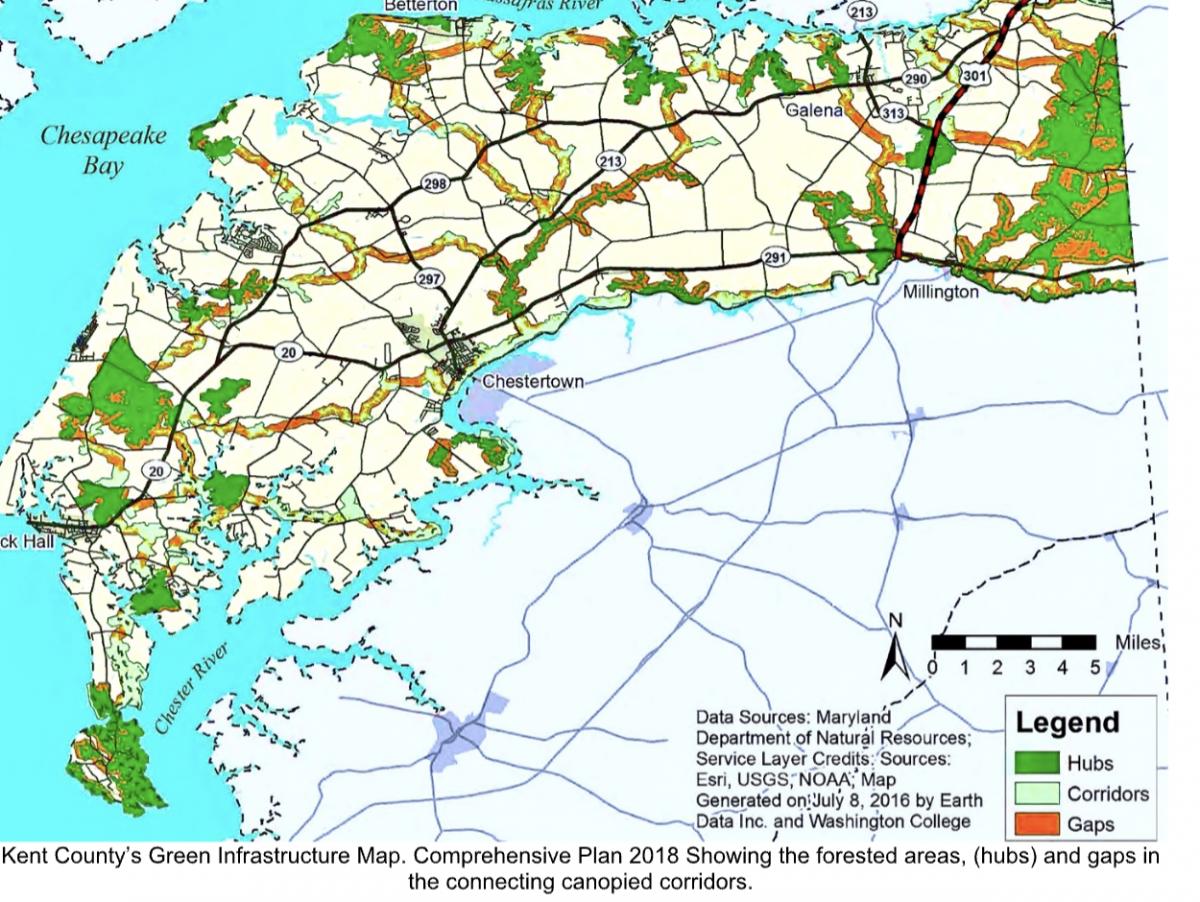The Forest Conservation Act (FCA) is a little known but important tool that positively impacts the environment and improves the Chesapeake Bay’s water quality. An amendment to strengthen Kent’s current policy under the county’s Land Use Ordinance (LUO) was introduced to the Comprehensive Rezoning Task Force for consideration on May 25, 2022. By every standard it is a modest proposal.
Kent County is tied for first place among all Maryland counties as the most deforested. According to the Maryland Department of Natural Resources, less than 25% of our land area is forested, and more than 60% of our streams are inadequately protected with trees.
Trees are not only a carbon sink, but they are also natural air conditioners, providing habitat and a critical line of defense for erosion and sediment control, filtering the nutrients that impact our streams and eventually the Bay. The Maryland Department of Planning forecasts that Kent County is on track for deforestation of an additional 800 acres in the coming decade. It is urgent that we act now to alter and reverse that forecast.
According to current law, if more than about an acre of land is disturbed in developing a project, a “tree debt” is incurred. That debt can be paid in one of the following ways: planting or preserving forest on the property, within the same watershed, within Kent County, or by making a payment (called payment in lieu).
The introduced FCA amendment proposes to boost by a small percent the calculations of tree debt. The proposal also increases the cost of payment in lieu within the county-designated priority funding area (land identified as desirable for development), from 30.5 cents per square foot to 40 cents. Outside the priority funding area, the proposal would raise the fee from 36.5 cents to 50 cents per square foot. By comparison, in Anne Arundel County the payment in lieu is $1.25/sq foot and In Howard and Montgomery counties it is $1.50 – more than five times what Kent County currently charges on land slated for development.
This proposal has drawn opposition from task force members representing developers who claim any changes to the FCA would deter development. There is no evidence to support this claim. In fact, other counties in Maryland have enacted stricter standards over the last three years and have seen no decline in demand for development.
Coalitions of concerned citizens in Anne Arundel, Cecil, Fredrick, Howard, Montgomery, and Prince George’s counties have demanded that their governing bodies act to protect forests and the environment. Officials in Queen Anne’s County, which is tied with Kent in the deforested land race, are considering shoring up its FCA standards. All these counties have come to the realization that while the cost to developers, relative to the overall cost of a project, is minimal, the benefit to the future of our environment is significant.
It costs real dollars to protect and reverse harms to the land, water, and environment where we live and work. Who should pay – those who would profit by reducing the quality of our environment and who seek to evade the extra costs of high-quality development, or the rest of us as we deal with degraded habitats and eroding lands?
You can have a direct impact on Kent County’s environmental future. A stronger FCA in our LUO will not happen without the involvement of concerned county residents, voicing their support for higher conservation standards. Contact Mr. William Mackey, Director of Planning, Zoning and Housing at [email protected] to express your support.
Janet Christensen-Lewis, Chair
Board of Directors for Kent Conservation and Preservation Alliance




Ken Schiano says
Thank you Janet, for leading this effort. It should be a no-brainer (once one absorbs the data contained in your county map), that restoring/completing wildlife corridors and stream and creek boundaries is a long-term benefit to all the citizens of our county.